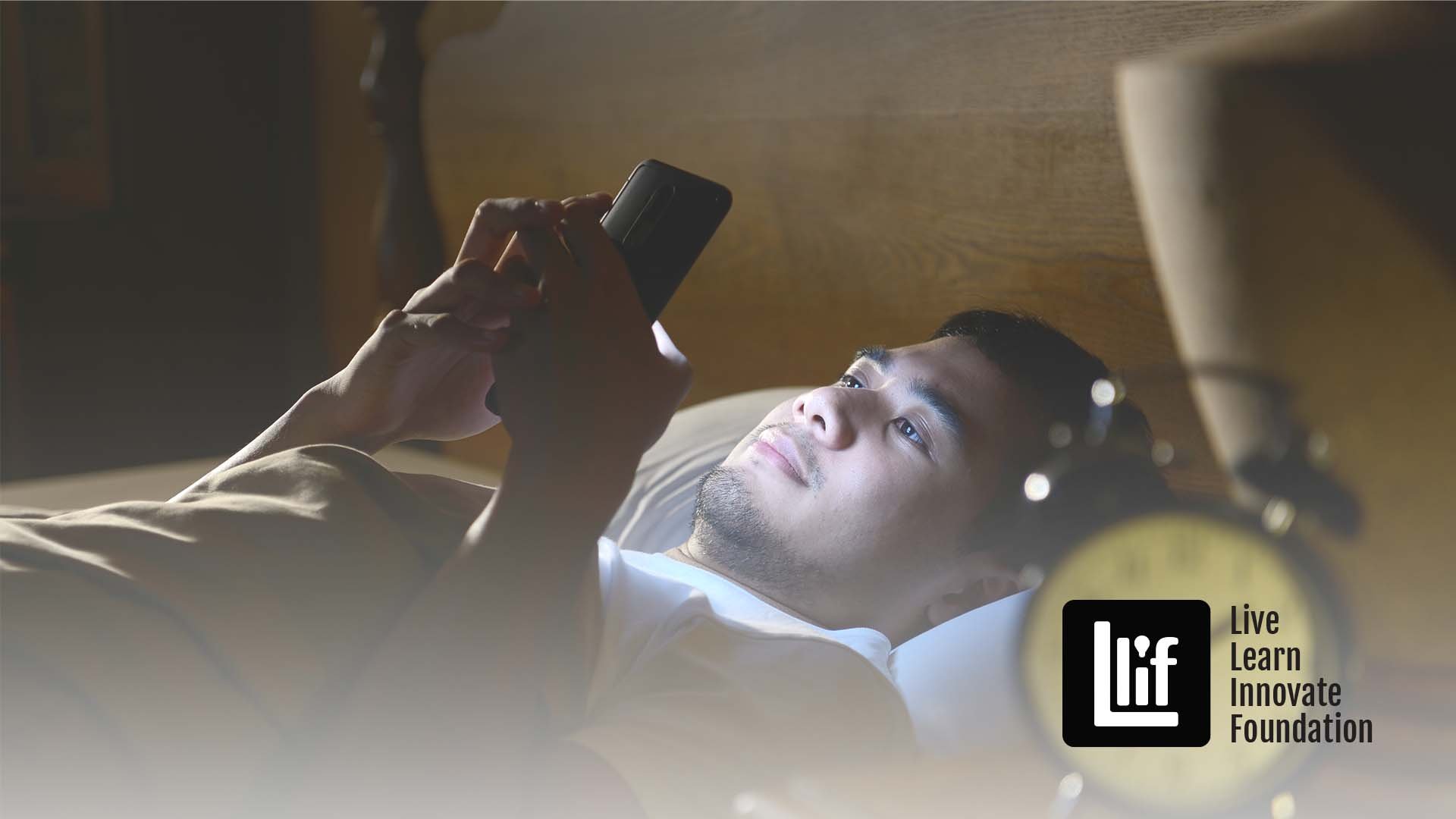
Study Confirms Sleep-Wake Cycle Disturbances, Social Media Use, and Depression Are Strongly Correlated
What is depression?
Depression is one of the most important global public health challenges. It is the single largest contributor to disability and disease, affecting 4% of the world’s population, causing 11% of all years lived with disability globally. It is furthermore associated with a reported 800,000 suicides on an annual basis, mostly among young adults.
Depression is significantly under-reported, underdiagnosed, and under-treated. This is in part due to its culturally shaped interpretations, such as motivation, mood, and well-being. Furthermore, in spite of its prevalence, the dynamics of its onset and development remain poorly understood, limiting the development of treatment options.
What is the sleep-wake cycle?
Like most mammals, humans experience circadian rhythms involving hormonal, behavioral, and cognitive changes that lead to stable sleep-wake cycles, even when individuals are disconnected from natural daylight or travel across time zones. A stable daily activity cycle is important to maintain physical and mental health.
Disturbances of the human circadian rhythm are strongly associated with mood disorders such as depression and anxiety, bipolar, and borderline personality disorder. The severity of depression has been linked to the magnitude of the sleep-wake cycle disturbance while reports of sleep disturbances can be used as an early warning signal of recurrent depression and predict the risk of poor outcomes in treatments for depression.
As a result, interventions targeting sleep are now considered an essential component of efforts to improve depression treatment outcomes. This is also emphasized by the central position of sleep-related symptoms in disorder networks.
You can view more detailed analysis and data visuals with the LLIF Personal Data Dashboard, by using data from your sleep trackers, Fitbit, Apple Watch, Samsung Watch and other devices.
An analysis of Twitter posts suggests that people with depression show increased rumination on social media overnight.
People with depression show distinct patterns of online activity, according to a study published in Scientific Reports. Twitter users who said they had a diagnosis of depression were more active on Twitter in the evening, less active in the early morning, and ruminated more on Twitter from midnight to around 6 a.m.
Major depression is one of the most common mental illnesses around the world and is associated with a range of negative outcomes like an increased risk of suicide and disease. While the underlying mechanism of depression remains a topic of study, one contributing factor seems to be poor sleep. In particular, depression has been repeatedly linked to disruptions of the circadian rhythm — the body’s internal clock that regulates the sleep-wake cycle.

A research team led by Marijn ten Thij set out to explore differences in the daily activity cycles of people with and without depression using a unique source of data — social media activity. This approach would offer them clues to the behavioral and cognitive activity of a large data set of people and allow them to estimate circadian rhythm cycles.
The researchers identified 688 Twitter users who had explicitly tweeted about receiving a diagnosis of depression. They then analyzed these users’ past tweets and compared them to the tweet histories of a random control sample of 8,791 Twitter users with no mentioned diagnosis of depression.
The researchers found that the depressed and non-depressed Twitter users’ activity levels followed a similar circadian rhythm — as demonstrated by the same pattern of ups and downs in activity throughout the day. Both groups’ activity levels peaked around 9 p.m. and dropped during the early hours of the day between 3 a.m. and 6 a.m.
However, there were significant differences in the groups’ activity levels at specific times of the day. Namely, the depressed group was much less active on Twitter between 3 a.m. and 6 a.m., 9 a.m. and 10 a.m., and 1 p.m. and 2 p.m. Users with depression were instead more active in the evening, between 7 p.m. and midnight.
To see what types of content might be driving these differences, the researchers looked closer at the tweets being posted during these times. Specialists in cognitive behavioral therapy (CBT) analyzed the content of the tweets, looking for certain word categories related to self-reflection and rumination.
It was found that depressed users (compared to non-depressed) tweeted more words related to rigid thinking and questioning (e.g., could, should), and fewer words related to positive affect (e.g., happy, love) during the time period from midnight to 3 a.m.
They also tweeted more words in the personal pronouns (e.g., I, myself) and negative affect (e.g., angry, cry) categories between 4 a.m. and 6 a.m. — which the authors say may suggest higher emotionality among the users with depression.
Finally, they used more words in all categories between 5 a.m. and 6 a.m., suggesting heightened rumination and self-reflection during these early morning hours.
Ten Thij and colleagues note that comparing the two groups’ activity levels revealed no evidence of a phase shift. In other words, the patterns of activity point to similar bedtime and wake-up times among both groups.
Instead, differences in activity levels were seen at specific times of the day. Finally, greater use of the self-reflection and rumination word categories further suggests that Twitter users with depression post tweets containing more “depressogenic” language.
Late night and early morning Reddit users may follow similar patterns. It’s worth noting this type of behavioral correlation is found on conversational social medias, and not visual-centric media outlets, like Pinterest.
“These results suggest that diagnosis and treatment of depression may focus on modifying the timing of activity, reducing rumination, and decreasing social media use at specific hours of the day,” the authors say. They also note that additional study into the word categories used could offer “insight into differences in broader language use between depressed individuals and the general population.”
The study, “Depression alters the circadian pattern of online activity”, was authored by Marijn ten Thij, Krishna Bathina, Lauren A. Rutter, Lorenzo Lorenzo‑Luaces, Ingrid A. van de Leemput, Marten Scheffer, and Johan Bollen.
What does social media sentiment analysis do?
Social media sentiment analysis is the practice of knowing how social media users perceive a topic. It falls under a larger process called social listening, or tracking conversations about a topic or industry for deeper insights. Social media sentiment analysis takes into account the users’ moods or emotions when they write posts or comments instead of just tracking social media activity metrics like engagement or likes.
For example, just because a video of a terrible incident has many shares, it does not mean that the social media users find this to be entertaining information.
Analyzing social media activity involves metrics like engagement rates. This becomes easier to understand with sentiment. You can think of sentiment as the metric that provides context to other metrics—as well as all the mentions, comments, and shares that are seen online. Sentiment helps explain the “tone” of social media users and clarify engagement rates’ true meaning.
Original study. | Source one. | Source two.
Who we are
The Live Learn Innovate Foundation is a 501(c)3 nonprofit entity that empowers software users to regain control of their personally generated health data, gain intuitive insights about their social data, learn the impact of their environment on health, and build a foundation of data analytics that empowers research, academics, and innovation in economic development.
Use cases for this secure, private method of data aggregation appear everywhere, expanding to family care, community growth, agricultural planning, and many more things still unseen. Help us keep going by getting involved today.